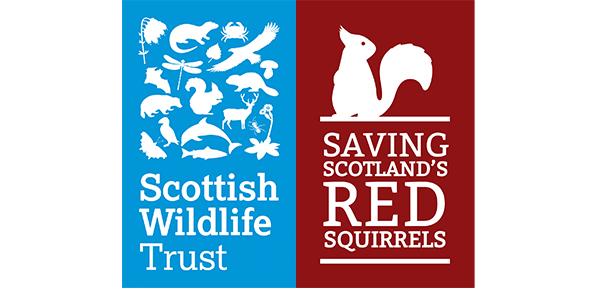Saving Scotland’s red squirrels with enhanced data processes
The Scottish Wildlife Trust is using Esri’s ArcGIS solutions to help save Scotland’s red squirrels, in a partnership project supported by the Scottish Government’s Nature Restoration Fund which is managed by NatureScot.The charity has improved the collection and accessibility of its monitoring data, which enables it to better identify threats and protect this charismatic and much-loved endangered species.
Browser-based, smart forms built with ArcGIS Survey123 for capturing research data
Interactive dashboard built with ArcGIS Dashboards for visualising data and identifying threats
Entire solution created easily in-house using the charity’s existing ArcGIS Online subscription
The Challenge
The UK’s native red squirrels have been in dramatic decline ever since American grey squirrels reached our shores in the 1800s, bringing disease and competition for food and habitat. To help protect remaining red squirrel populations, the Scottish Wildlife Trust is leading a partnership project called Saving Scotland’s Red Squirrels. Part of its work involves monitoring squirrels using feeder boxes at specific locations. The project team analyses the hairs captured on sticky pads (or images on camera traps) to identify the presence of red squirrels, grey squirrels and pine martens, and then uses this information to inform strategies to safeguard recovering red squirrel populations.
When this important research began, recording the high volume of data in a format compatible with the project’s main database presented a challenge, and the team only had capacity to convert findings from the peak months of May and June into a format that was compatible with mapping software. Consequently, the team didn’t have an easy way of collating and visualising the findings from across its six regions, year-round, which restricted its ability to gain insights from the data.
“ArcGIS has not only made data collection much more straightforward, but also allowed us to collect this in a spatial database year-round, which is operationally much more useful.”
Tom Lewis, Data Officer for Saving Scotland’s Red Squirrels, Scottish Wildlife Trust
The Solution
The Scottish Wildlife Trust already used Esri’s geographic information system (GIS) technology in other important conservation projects. It realised that it could enhance data processes in the Saving Scotland’s Red Squirrels project by using Esri’s ArcGIS solutions to capture, share and analyse the feeder box findings.
The charity used the advanced XLS form function in ArcGIS Survey123 to build a bespoke, browser-based, smart form for recording the survey samples. It then used the ArcGIS Dashboards app builder to create an intuitive and interactive dashboard for displaying the results on maps and in tables. Created quickly in-house, this ArcGIS-based approach captures data in a schema that is compatible with other internal systems.
Today, just over 100 volunteers regularly visit around 880 active feeder boxes and collect samples. Nine regional project officers then study the hairs on the sticky pads under a microscope and upload the findings by accessing the ArcGIS Survey123 form from their Internet browsers. They simply select the species detected, the sample collection date and the box it came from, and additional required information such as the precise location is automatically generated.
All staff involved in this monitoring effort can view the results on the ArcGIS dashboard straight away. They can see colour-coded points on the maps indicating the known locations of squirrels and pine martens, and can filter the view by species, time period, region, staff member and specific feeder boxes. Features embedded in the dashboard enable users to see the numbers of visits and detections. These automatically update based on the selected filters, which makes the crucial grey squirrel detections easy to visualise.
“ArcGIS helps keep everyone on the same page.”
Tom Lewis, Data Officer for Saving Scotland’s Red Squirrels, Scottish Wildlife Trust
Benefits
Easy access to year-round research data
Now, for the first time, the Scottish Wildlife Trust has easy access to the findings from sticky pads, in a spatial format, for the whole year, rather than just two months. “ArcGIS has not only made data collection much more straightforward, but also allowed us to collect this in a spatial database year-round, which is operationally much more useful,” observes Tom Lewis, Data Officer for the Saving Scotland’s Red Squirrels project at Scottish Wildlife Trust.
Real-time information to inform rapid responses
Critically, the new ArcGIS solution makes feeder box detections visible in real-time, enabling the project team to quickly identify the key areas to focus on to safeguard red squirrels. When grey squirrel hairs are detected at feeder boxes around Aberdeen, for example, the team can coordinate rapid responses to set traps in precisely the right locations, preventing grey squirrels from establishing in an area and endangering recovering populations of red squirrels.
Greater insight for intensive long-term monitoring
Using the ArcGIS dashboard, the Scottish Wildlife Trust can closely monitor squirrel detections over the long-term. Staff can, for example, monitor the Highland Boundary Fault, where geography creates a natural barrier, and monitor routes that grey squirrels could use to spread into established red squirrel areas. “Being able to explore our data on a digital map allows us to visualise the relationships between feeder box detections and identify incursion routes more easily,” Lewis explains.
Shared understanding of the bigger picture
Geographically dispersed team members working on the Saving Scotland’s Red Squirrels project now collect and view data in the same way, which supports stronger collaboration and improves what Lewis refers to as ‘team cohesion’. “ArcGIS helps keep everyone on the same page,” he says. “Staff can explore the data from their own feeder boxes but also see samples from across the team, which wouldn’t have been easy before.”
Better evidence to inform funding decisions
With thousands of data samples collected already, the project team is building strong evidence to inform future conservation efforts. It shares its data with third parties, such as the North East Scotland Biological Records Centre (NESBReC), and will use it to show where funding is most needed for specific red squirrel conservation measures. As Lewis says, “The data we collect can help convey the importance of the project to potential funders and inform decision making by us, along with partners.”



